#plasticity
Text
i think, its very funny when SIOC fics have different viewpoints that show the main characters in different light
like, off the top of my head:
Tori Mendoza: [screaming internally, thinking about the ramifications of yogurt-sealing, thinking about alfalfa]
Enemy Ninja: “Oh god... its the fucking SPLEEN EATER”
Shikako Nara: [okay i know i need to show off if i want to get promoted, and i need to clue gaara in to his sand’s weakness, but... this is gonna suck.]
Everyone in the crowd: “what the fuck. what the fuck. how did she just do tha- how many explosive notes does she HAVE”
The Raikage: *offscreen fury*
Netsui, Cloud Genin: ᵒʰ ᵍᵒᵈ ᶦ ᵗʳᶦᵉᵈ ᵗᵒ ᶠᶦᵍʰᵗ ᵗʰᵃᵗ
Keisuke Gekko: “hey isobu it wouldn’t be too overkill if we did the v2 cloak, right? That’s probably not unheard of in this dimension??” “I’m bored, so, i don’t care. Let’s smash some shit.” “thanks isobu”
The Entirety of Class 1-A:

#fanfiction#Plasticity#Dreaming of Sunshine#Catch Your Breath#Shell Game#i specifically referenced shell game!Kei in this post because that is Kei trying to tone it down. and failing.#also netsui's reaction comes largely from View From the Clouds by Witchbreaker on Ao3.#RIP netsui; probably shouldve looked in a bingo book#the raikage's reaction; however; is canon.
187 notes
·
View notes
Text
NEURON FACTORY
CABARET VOLTAIRE
[PLASTICITY, 1992]
#audio#cabaret voltaire#richard h kirk#tech house#industrial#electro#experimental#plasticity#90s#techno#electronic#music#u
9 notes
·
View notes
Text
A new treatment tested on a high-quality steel alloy produces extraordinary strength and plasticity, two traits that must typically be balanced rather than combined. Ultra-fine metal grains that the treatment produced in the outermost layer of steel appear to stretch, rotate and then elongate under strain, conferring super-plasticity in a way that Purdue University researchers cannot fully explain.
The researchers treated T-91, a modified steel alloy that is used in nuclear and petrochemical applications, but said the treatment could be used in other places where strong, ductile steel would be beneficial, such as cars axles, suspension cables and other structural components. The research, which was conducted in collaboration with Sandia National Laboratories and has been patented, appeared Wednesday, May 31 in Science Advances.
More intriguing even than the immediate result of a stronger, more plastic variant of T-91 are observations made at Sandia showing characteristics of what the team is calling a "nanolaminate" of ultra-fine metal grains the treatment created in a region extending from the surface to a depth of about 200 microns. Microscopy images show an unexpected deformation of the treated steel -dubbed G-T91 (or gradient T91) -- as it is subjected to increasing stress, said Xinghang Zhang, lead author and a professor in the School of Materials Engineering at Purdue.
Read more.
#Materials Science#Science#Steel#Alloys#Strength of materials#Plasticity#Grains#Purdue University#Stress and strain
24 notes
·
View notes
Text
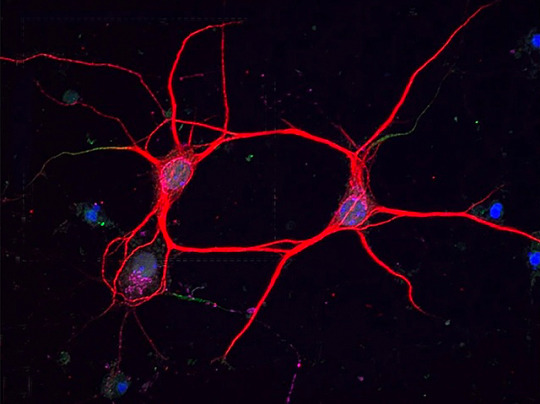
Magnetic Head
Static magnetic stimulation changes the structural plasticity of neurons cultured in a dish – implications for its use in non-invasive brain stimulation
Read the published research article here
Image from work by J. L. Beros and E. S. King and colleagues
The Perron Institute for Neurological and Translational Science, Nedlands, Australia
Image originally published with a Creative Commons Attribution 4.0 International (CC BY 4.0)
Published in Scientific Reports, January 2024
You can also follow BPoD on Instagram, Twitter and Facebook
#science#biomedicine#immunofluorescence#neuroscience#biology#neurons#plasticity#magnetic#brain stimulation#brain
6 notes
·
View notes
Text


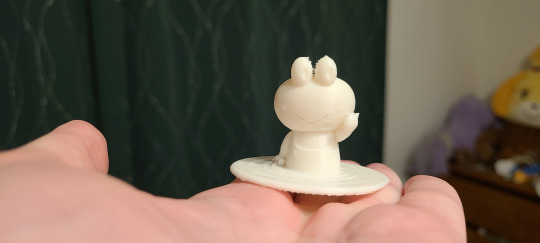
This was simultaneously the last art I did for 2023 and the first art I did for 2024! I modeled and 3D printed Kyorosuke as a Christmas gift for my friend @deathgloss on New Year's Eve and then I plopped into Blender to add materials and render a lil animation on New Year's Day!
Had to wait to post it because I wasn't seeing them until today :3
4 notes
·
View notes
Text
2 notes
·
View notes
Text

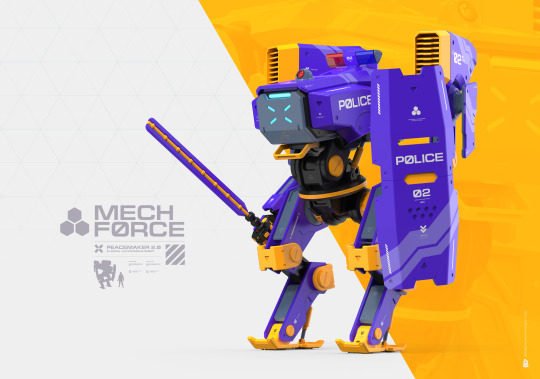

Mech Designed with Plasticity
As you may seen in my previous posts I started working with Plasticity Software. Im very happy with it, cause it lets me design hard surface objects way more effortlessly than Blender ot Zbrush. I'll probably stick strictly to it when it's about hard surface from now on. Here is a mech I made for the sake of practice. Rendered in Keyshot.
3 notes
·
View notes
Text

#paulalmao#video#tiktok viral#tiktok video#spider girl#music sounds better with you#spider moves#dance technique#plasticity#cute girl#arachnophobia#ladies#🕷#🕷️#pretty girls#spider dance
4 notes
·
View notes
Text
Pe Real-Time

Thirst for Novelty
We receive from the explorer process the elation of new experiences; of sunset watching, cave diving, dancing, ocean sailing, travel and all sorts of fluid and rich activities. The explorer process wants to rediscover everything on its own. It may not be enough to view something in a book, since the greatest fulfillment comes in the real-time witnessing of life. Pe has an insatiable hunger for what comes next and can grow bored and restless in an environment that offers little opportunities for experimentation. The explorer process seeks animation and when a stagnant and texture-less “present” yields no such properties, they will venture elsewhere. But "elsewhere" need not be a physical location, as Pe types will also have the highest curiosity for new concepts, ideas, theories and interpretations of life. They may dabble with information structures, trying them on consecutively until finding their favorites. Yet, because this thirst is permanently embedded within Pe, it is not in it's nature to ever be fully satisfied for long. They may eventually abandon their present engagements to once again pursue new avenues and discover what has now entered into global attention.

Plasticity
This gives Pe a contemporary focus, allowing it to be up to date but also to pivot quickly whenever necessary. It carries an enormous capacity for flexibility and improvisation. Being "too old for new tricks" is never the case for Pe due to its refresh factor which metabolizes the world anew each moment. Learning a new job, task, skill, language or exercise is always plausible and in the worst case scenario older abilities are simply forgotten with time. In this sense Pe can be quite unlimited, as it gives the person an ability to reinvent themselves endlessly. But this plasticity can also have an unsettling effect, especially when this continual reinvention causes a loss of personal identity. The rate at which Pe can adapt to reality may leave it wondering about it's core essence, what they most cherish, what career is best suited for them and what kind of partner they really want. They will be vulnerable to surrender to the transience of life, flowing with all its currents, only to wash up ashore in a life they neither expected or wanted. But Pe also gives types a capacity to recover from hardships, to maintain hope and to keep on swimming.

Sense of Humor
This function also generates a special talent for humor, with Pe-leads being the most highly represented in the domain of comedy. Pe's situational awareness allows for quick improvisational thinking, leading to success in anything from stand-up comedy to freestyle rap. A key focus of the Pe function is entertainment, both in what it gravitates to and what it's own activity creates. Above all else Pe enjoys the experience of surprise and amusement; the euphoric stimulation of an engaging situation. Thus, Pe can provide a great deal of energy toward raising the laughter of the present, often using itself as a resource or prop. The class clown is a quintessential exemplar of Pe's comical energy, as is the court jester or joker. Because humor is generated by the sudden inversion of our perceptions and expectations, it constitutes a contagious novelty which Pe will thirst after in the same way it does for any other information. This habit of humor often translates into an jolly, easygoing and enthusiastic personality that is known for bringing a spark of light into the room.

Generative Ability
The essential role of Pe is the appreciation and introduction of new information into the world. It both seeks that information out but also participates in its renewed manifestation through a creative act. Pe is a creative function and is thus a key source of innovation and invention. The perpetual re-imagining of music, fashion, drama, art, and media owes its existence to Pe which forever revitalizes society. The street performer, the traveling musician, the trinket maker, the aerosol artist, the break-dancer, the gypsy, and the like -- are all varied iterations of a broader Pe narrative that collectively transforms and defines modern culture. However, this generative ability is also responsible for destabilizing the present societal structures. The heavier aspect of Pe can equally lead to disarray, disorder, and chaos as a byproduct of the disassembly of previous boundaries. Pe will flirt with danger as it explores uncharted territories, and stepping outside of the known societal structures can lead to delinquency, escapism, and intoxication.

#Cognitive Typology#Energetics#Extroverted Perception#Pe#ENTP#ESTP#ESFP#ENFP#Behaviorism#Real-Time#Thirst for Novelty#Plasticity#Sense of Humor#Generative Ability#Puer#Puella
2 notes
·
View notes
Text
SOUL VINE (70 BILLION PEOPLE)
CABARET VOLTAIRE
[PLASTICITY, 1992]
#audio#cabaret voltaire#richard h kirk#acid house#industrial#electro#experimental#plasticity#90s#techno#music#electronic#u
8 notes
·
View notes
Photo

Treatment creates steel alloys with superior strength and plasticity
A new treatment tested on a high-quality steel alloy produces extraordinary strength and plasticity, two traits that must typically be balanced rather than combined. Ultra-fine metal grains that the treatment produced in the outermost layer of steel appear to stretch, rotate and then elongate under strain, conferring super-plasticity in a way that Purdue University researchers cannot fully explain.
The researchers treated T-91, a modified steel alloy that is used in nuclear and petrochemical applications, but said the treatment could be used in other places where strong, ductile steel would be beneficial, such as car axles, suspension cables and other structural components. The research, which was conducted in collaboration with Sandia National Laboratories and has been patented, appeared in Science Advances.
More intriguing even than the immediate result of a stronger, more plastic variant of T-91 are observations made at Sandia showing characteristics of what the team is calling a "nanolaminate" of ultra-fine metal grains the treatment created in a region extending from the surface to a depth of about 200 microns.
Read more.
#Materials Science#Science#Steel#Alloys#Plasticity#Strength of materials#Purdue University#Grain size#Stress and strain
18 notes
·
View notes
Quote
In 2014, eight scientists took up this challenge, publishing an article in the leading journal Nature that asked “Does evolutionary theory need a rethink?” Their answer was: “Yes, urgently.” Each of the authors came from cutting-edge scientific subfields, from the study of the way organisms alter their environment in order to reduce the normal pressure of natural selection – think of beavers building dams – to new research showing that chemical modifications added to DNA during our lifetimes can be passed on to our offspring. The authors called for a new understanding of evolution that could make room for such discoveries. The name they gave this new framework was rather bland – the Extended Evolutionary Synthesis (EES) – but their proposals were, to many fellow scientists, incendiary.
[...] In 1942, the English biologist Julian Huxley coined the name for this theory: the modern synthesis. Eighty years on, it still provides the basic framework for evolutionary biology as it is taught to millions of schoolchildren and undergraduates every year. Insofar as a biologist works in the tradition of the modern synthesis, they are considered “mainstream”; insofar as they reject it, they are considered marginal.
Despite the name, it was not actually a synthesis of two fields, but a vindication of one in light of the other. By building statistical models of animal populations that accounted for the laws of genetics and mutation, the modern synthesists showed that, over long periods of time, natural selection still functioned much as Darwin had predicted. It was still the boss. In the fullness of time, mutations were too rare to matter, and the rules of heredity didn’t affect the overall power of natural selection. Through a gradual process, genes with advantages were preserved over time, while others that didn’t confer advantages disappeared.
[...] While the modern synthesists looked at life as if through a telescope, studying the development of huge populations over immense chunks of time, the molecular biologists looked through a microscope, focusing on individual molecules. And when they looked, they found that natural selection was not the all-powerful force that many had assumed it to be.
They found that the molecules in our cells – and thus the sequences of the genes behind them – were mutating at a very high rate. This was unexpected, but not necessarily a threat to mainstream evolutionary theory. According to the modern synthesis, even if mutations turned out to be common, natural selection would, over time, still be the primary cause of change, preserving the useful mutations and junking the useless ones. But that isn’t what was happening. The genes were changing – that is, evolving – but natural selection wasn’t playing a part. Some genetic changes were being preserved for no reason apart from pure chance. Natural selection seemed to be asleep at the wheel.
[...] The case for EES rests on a simple claim: in the past few decades, we have learned many remarkable things about the natural world – and these things should be given space in biology’s core theory. One of the most fascinating recent areas of research is known as plasticity, which has shown that some organisms have the potential to adapt more rapidly and more radically than was once thought. Descriptions of plasticity are startling, bringing to mind the kinds of wild transformations you might expect to find in comic books and science fiction movies.
Emily Standen is a scientist at the University of Ottawa, who studies Polypterus senegalus, AKA the Senegal bichir, a fish that not only has gills but also primitive lungs. Regular polypterus can breathe air at the surface, but they are “much more content” living underwater, she says. But when Standen took Polypterus that had spent their first few weeks of life in water, and subsequently raised them on land, their bodies began to change immediately. The bones in their fins elongated and became sharper, able to pull them along dry land with the help of wider joint sockets and larger muscles. Their necks softened. Their primordial lungs expanded and their other organs shifted to accommodate them. Their entire appearance transformed. “They resembled the transition species you see in the fossil record, partway between sea and land,” Standen told me. According to the traditional theory of evolution, this kind of change takes millions of years. But, says Armin Moczek, an extended synthesis proponent, the Senegal bichir “is adapting to land in a single generation”. He sounded almost proud of the fish. [...] The crucial thing about such observations, which challenge the traditional understanding of evolution, is that these sudden developments all come from the same underlying genes. The species’s genes aren’t being slowly honed, generation by generation. Rather, during its early development it has the potential to grow in a variety of ways, allowing it to survive in different situations. Plasticity doesn’t invalidate the idea of gradual change through selection of small changes, but it offers another evolutionary system with its own logic working in concert. To some researchers, it may even hold the answers to the vexed question of biological novelties: the first eye, the first wing. “Plasticity is perhaps what sparks the rudimentary form of a novel trait,” says Pfennig.
“Do we need a new theory of evolution?” from The Guardian
#reading list#the guardian#evolution#science#extended evolutionary synthesis#history of science#plasticity
11 notes
·
View notes
Text
Oh really…that’s pretty trippy. I’m sure no one will use this science tidbit for an excuse to micro dose “senior” learners…like myself. Fingers crossed.
3 notes
·
View notes
Text
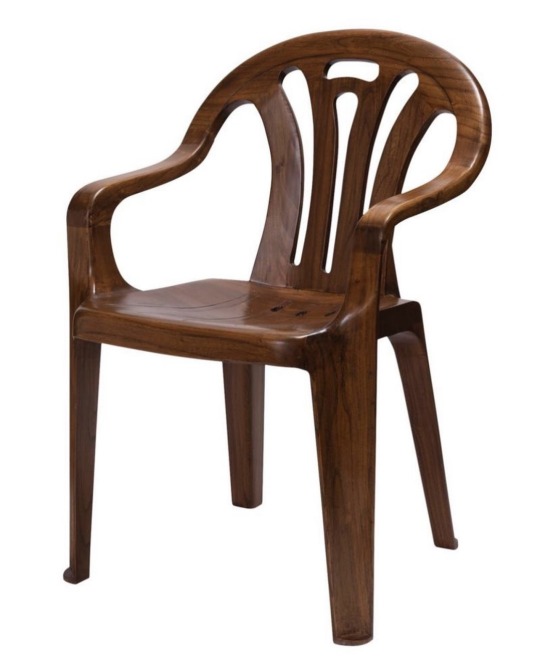

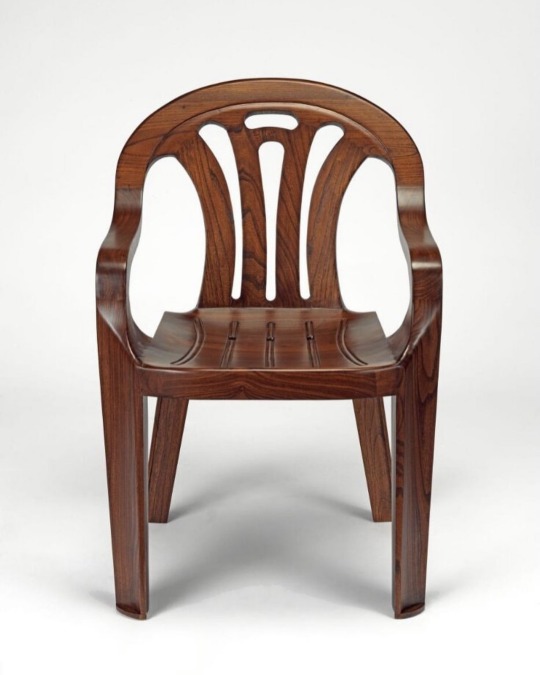
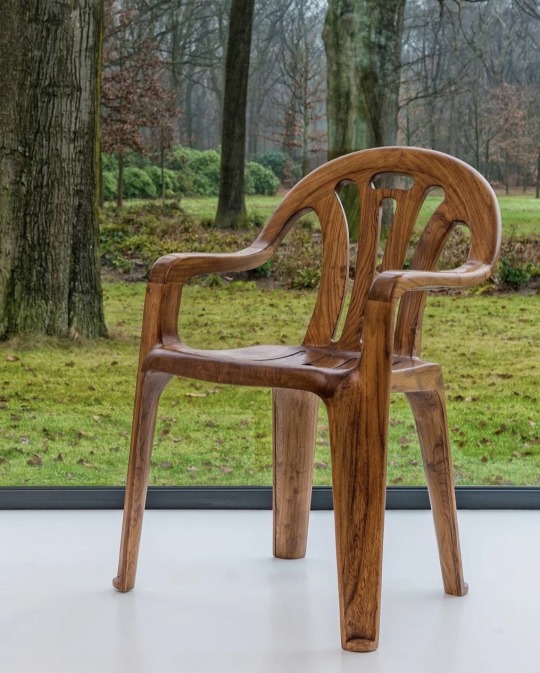
Plastic Chair in Wood by Maarten Baas (2008)
65K notes
·
View notes
Text
Rapid plastimeter

Labotronics rapid plastimeter is a microprocessor controlled unit with plasticity retention determination feature. It is equipped with an ageing oven for precise ageing of elastomers. The host fast compression cylindrical specimens ensure rapid plasticity index determination. Variable loading duration provides compatible time adjustments of retention index testing for more visit labotronics.com
0 notes
